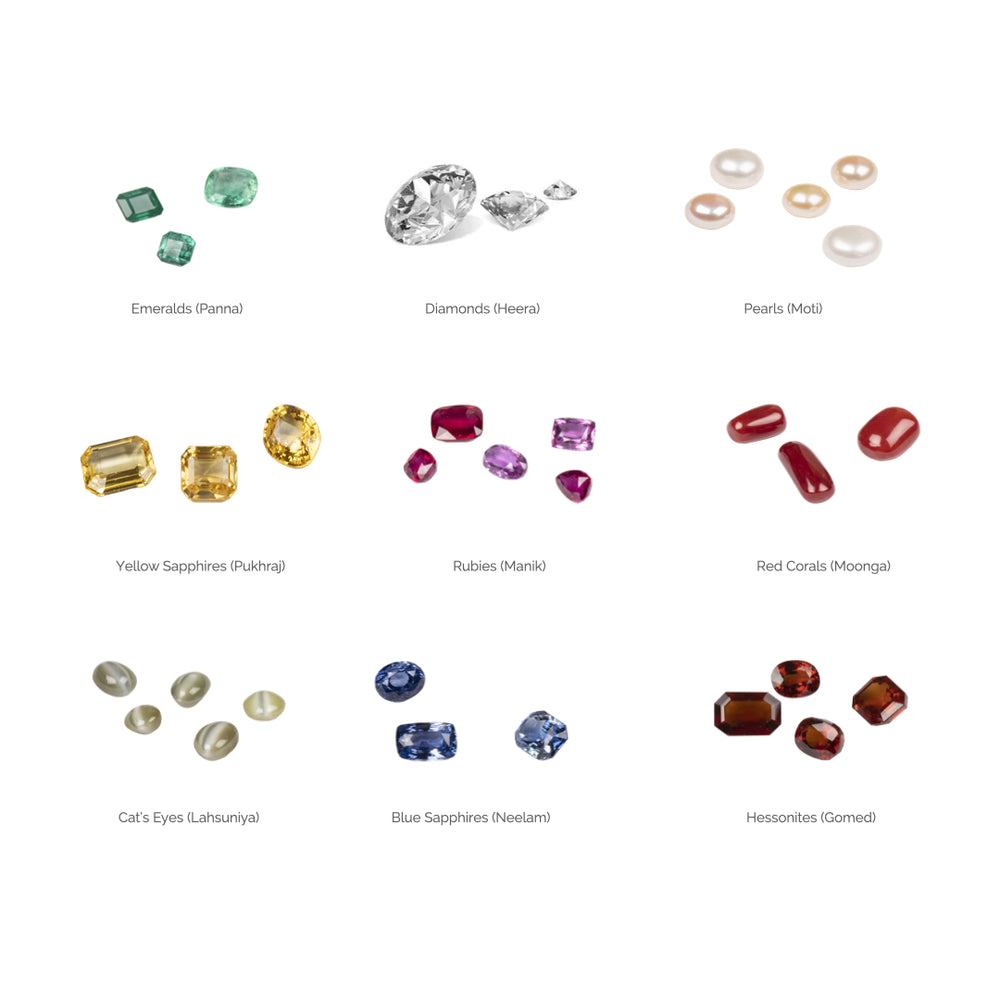The world of gemstones is as diverse as it is beautiful, but few collections of gems hold as much historical and astrological context as the Navratna stones. The Navratna stones belong to a special group of gems that have held a fascinating place throughout history. Often associated with astrology, the Navratans are a group of 9 gemstones that are believed to be among the most powerful of gems – representing 9 different celestial bodies in our cosmos. Throughout history, these gems have traditionally been hailed as extremely important across diverse South Asian cultures including India, Thailand, Nepal, Singapore, Vietnam, Malaysia, Sri Lanka, etc.
The term 'Navratna,' derived from the Sanskrit language, simply means “nine gems”, but it goes beyond being just a name. It symbolizes a cosmic equilibrium and balance – qualities that these precious stones are believed to encapsulate, elevating their status to a realm of wonder and reverence.
The History of Navratna Gems
The term "Navratnas" is thought to have its origins with 2 distinct historical attributions, though definitive historical evidence remains elusive. In the first, it is believed that the mighty emperor Vikramaditya's court housed 9 renowned scholars or intellectuals, who were collectively known as the “Navratnas”, owing to their extraordinary wisdom and contributions to various fields.
The second and more popular of the attributions of the term Navratnas can be traced to the court of the Mughal emperor Akbar. Akbar's Navratnas consisted of 9 distinguished intellectuals, including artists, musicians, poets, and scholars, who were recognized for their exceptional talents and contributions.
Over time, the term Navratnas came to be associated with nine specific gems representing the nine different celestial bodies (Navagraha) in Vedic astrology. Each gem is believed to correspond to a particular planet, harmonizing the energies of that planet within an individual's astrological chart and attracting good fortune. The nine gems are Ruby (Sun), Pearl (Moon), Red Coral (Mars), Emerald (Mercury), Yellow Sapphire (Jupiter), Diamond (Venus), Blue Sapphire (Saturn), Hessonite (Rahu), and Cat's Eye (Ketu).
Wearing these gems is thought to forge a profound connection with their energies, leading to a more fulfilled and contented life. Even today, the Navratna stones hold significant astrological value and are sought after by individuals from all walks of life.
The Navratna Gems
1. Ruby (Manik)
Associated with the sun, Ruby or the Manik stone is often referred to as the King of Gems, and is perhaps the most important of the nine gems. The Navratan places the ruby at its heart due to its symbolic association with the Sun, which is the centre of our solar system. Ruby is believed to enhance vitality and confidence. It is also thought to bring success in careers and improve overall health and well-being.
Curious Anecdote: In ancient Burmese folklore, warriors implanted rubies into their skin before battle, believing it granted invincibility. In medieval Europe, rubies were worn to ensure health, wisdom, wealth, and success in love.
 Rubies (Manik)
Rubies (Manik)
2. Pearl (Moti)
The Pearl, or Moti in Hindi, is associated with the Moon, and symbolizes purity, peace, harmony, and innocence. Wearing a Pearl stone is believed to enhance the Moon's influence and energy, fostering increased emotional intelligence, stability and creativity. Moreover, it is also believed to exert a calming influence on the mind, promoting inner peace, particularly in challenging situations.
Curious Anecdote: In Chinese mythology, pearls were believed to descend from the sky whenever dragons clashed amidst the clouds. In other tales, white pearls were thought to be tears shed by the gods.
 Pearls (Moti)
Pearls (Moti)
Red Coral (Moonga)
Red Coral or Moonga stone is associated with Mars, and it is believed to bestow courage, energy, and protection upon its wearer. With its vibrant red hue, it symbolises assertiveness and vitality, acting as a source of action and strength. The colour red further intensifies its influence by enhancing physical vitality, making it a powerful gemstone in promoting courage and physical health.
Curious Anecdote: Red coral has also been used as a talisman since the Roman Empire, believed to bring long life and protection in wars. Furthermore, the Tibetans valued it as a protective and healing stone.
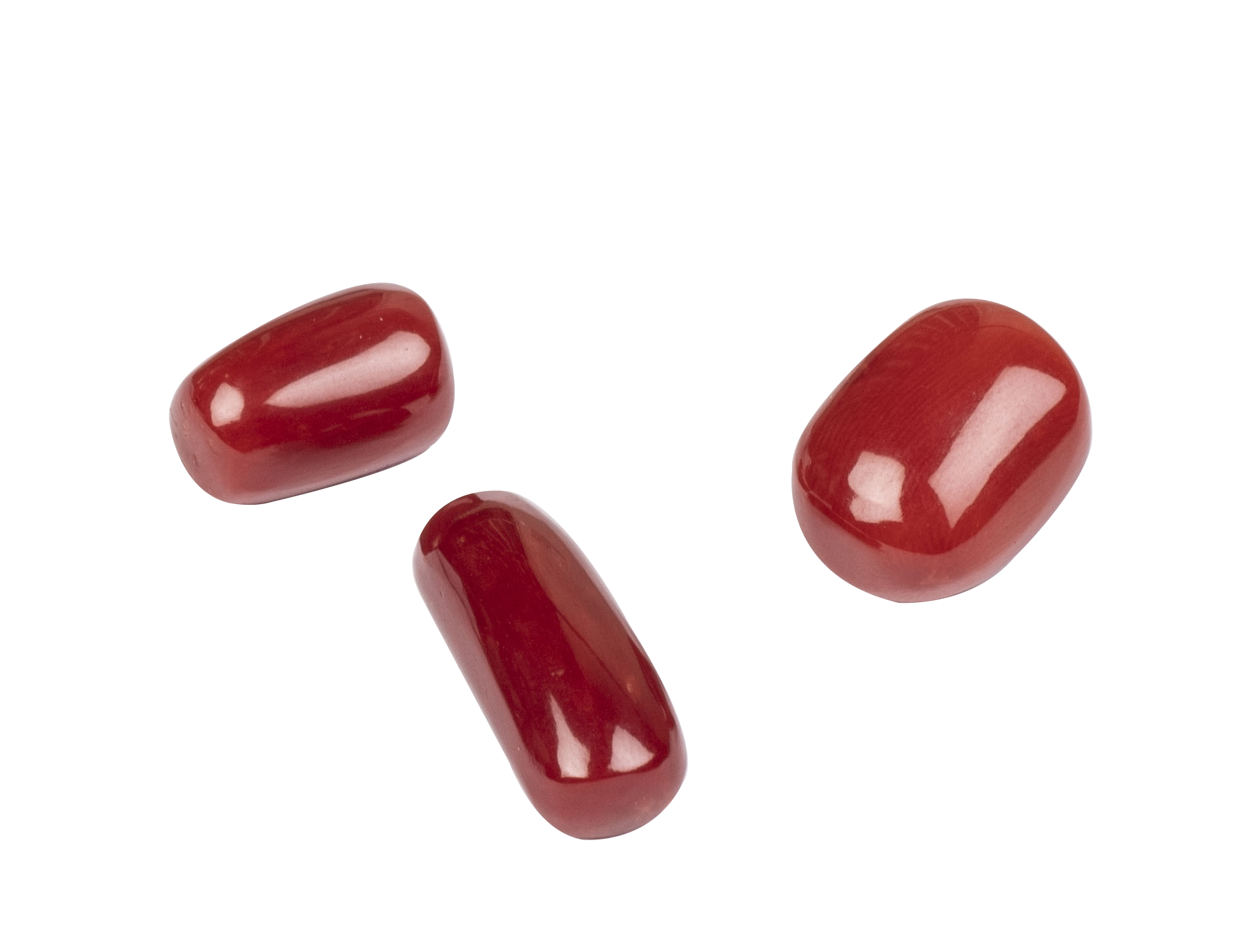 Red Corals (Moonga)
Red Corals (Moonga)
4. Emerald (Panna)
Emerald or the Panna stone is associated with Mercury - the planet of intellect and communication, and is believed to enhance the wearer's mental capacity. This Navratan is thought to improve intelligence, communication skills, and memory. Its influence is believed to bring success in education, and business skills, and foster harmony in relationships.
Curious Anecdote: In ancient Egyptian culture, panna stones were considered a symbol of eternal life and were often used in the jewellery of pharaohs and queens.
 Emeralds (Panna)
Emeralds (Panna)
5. Yellow Sapphire (Pukhraj)
The yellow sapphire or Pukhraj stone is associated with Jupiter, and is believed to bestow wisdom, knowledge, and good fortune. Its association with prosperity, wealth, and spiritual growth is said to bring luck and success in endeavours. Within the collection of Navratna stones, the colour yellow adds to its positive qualities, symbolizing joy, happiness, and optimism.
Curious Anecdote: These gems were regarded by the ancient Greeks and Romans as potent protectors, possessing the ability to safeguard their wearers from evil spirits.
 Yellow Sapphires (Pukhraj)
Yellow Sapphires (Pukhraj)
6. Diamond (Heera)
Associated with Venus, Diamonds or Heera is revered as a symbol of love and beauty. These stones, perhaps the most popular of all gems, are believed to bring balance to people's lives by enhancing their grace, charm, and artistic talents. Moreover, these gems are thought to foster harmonious relationships, attract abundance, and promote overall happiness and harmony. Diamonds have historically been regarded as a symbol of love.
Curious Anecdote: Diamonds also have historical significance, as they were once believed to be fragments of stars or tears of gods in different cultures. For instance, ancient Greeks believed that diamonds were splinters of stars fallen to Earth.
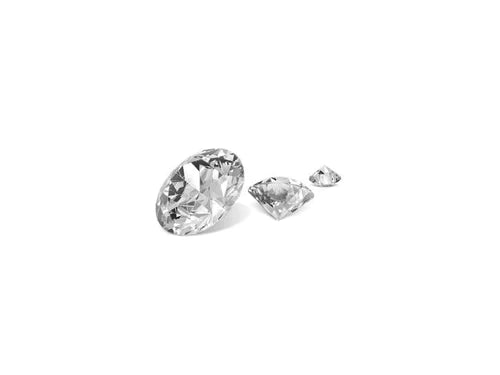 Diamonds (Heera)
Diamonds (Heera)
7. Blue Sapphire (Neelam)
Within the Navratna stones, the blue sapphire or the Neelam stone is associated with Saturn. Blue Sapphire is believed to bring mental clarity, discipline, and spiritual growth. The colour blue symbolizes wisdom and spiritual awakening, and enhances its significance in Vedic astrology, where this gem is revered as one of the most potent gemstones for overcoming life's obstacles and challenges.
Curious Anecdote: In ancient times, kings adorned sapphires around their necks, considering them a potent protective charm against harm and negative forces. In ancient Persia, blue sapphires were revered for their celestial colour, and people believed that they comprised a piece of the heavens themselves.
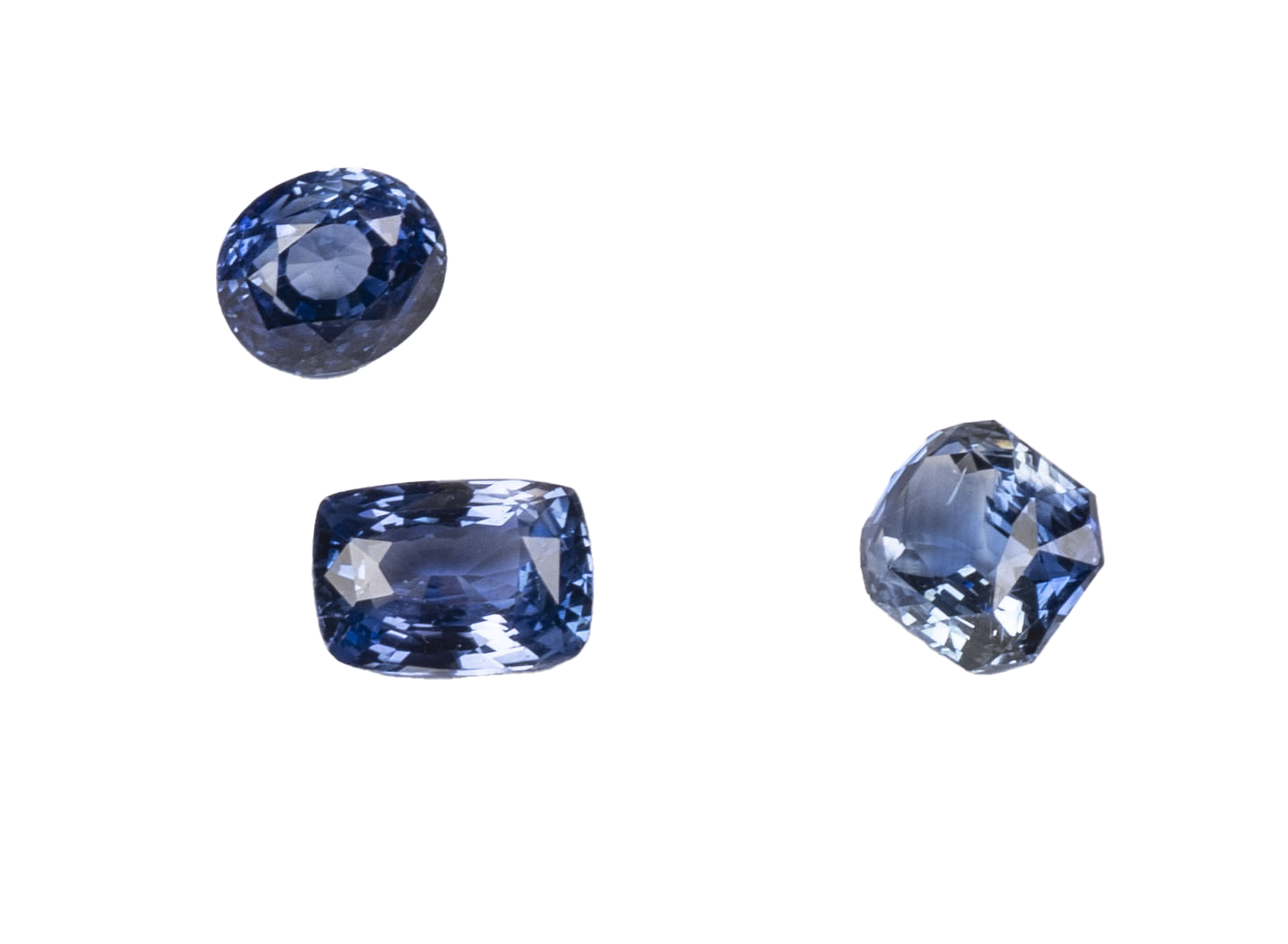 Blue Sapphires (Neelam)
Blue Sapphires (Neelam)
8. Hessonite (Gomed)
Hessonite or Gomed stone is the Navratan associated with Rahu (the ascending or north lunar node). It is believed to offer protection against negative influences while enhancing focus and concentration. It has found its way into various cultures to amplify intuition, facilitate meditation, and promote mental healing. As a powerful shadow planet known for its unpredictable and obscure nature, Rahu holds a profound astrological connection with the warm cinnamon-coloured Hessonite gemstone, symbolizing protection, clarity, healing, and spiritual growth.
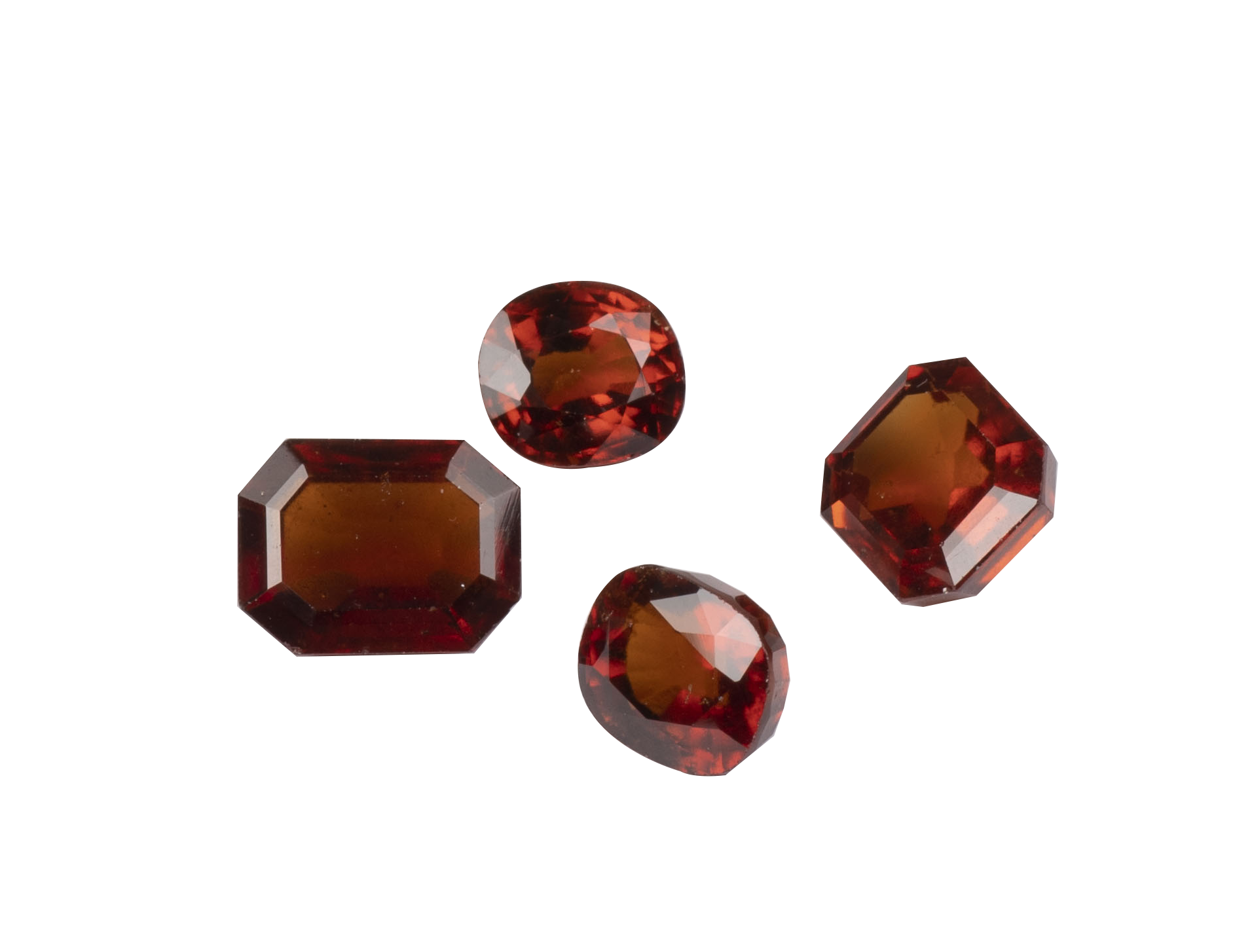 Hessonites (Gomed)
Hessonites (Gomed)
9. Cat’s Eye (Lahsuniya)
The Chrysoberyl Cat's Eye, the final gem among the Navratna stones, is associated with Ketu (the descending or south lunar node). It bestows spiritual insights, intuition, and protection from hidden enemies, enhancing psychic abilities and fostering enlightenment. Despite Ketu's inauspicious reputation as a shadow planet, Cat's Eye is believed to counteract its malefic effects, bringing peace to one's life. As one of the protective gems, Cat's Eye evokes feelings of spiritual awakening and enlightenment, making it a cherished gemstone among those seeking inner wisdom and growth.
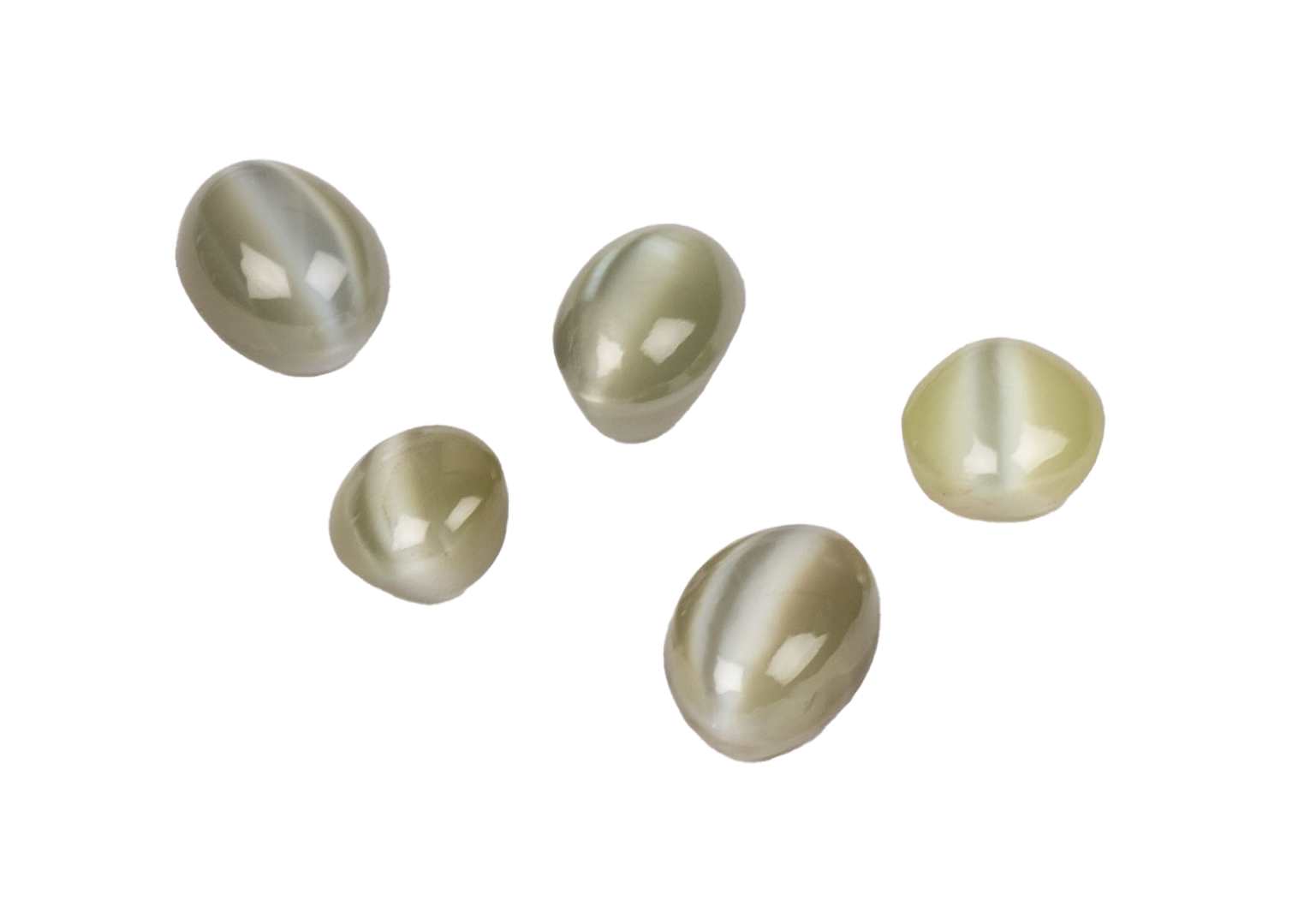 Chrysoberyl Cat’s Eyes (Lahsuniya)
Chrysoberyl Cat’s Eyes (Lahsuniya)
The Arrangement of the Navratnas
The arrangement of Navratna stones in jewellery holds great importance. Navratna jewellery typically includes an array of pieces such as rings, earrings, pendants, necklaces, chokers, bracelets and armbands.
At the centre lies the ruby stone (manik), symbolizing the Sun, representing the solar system's central body. Surrounding it in a specific clockwise order from the top are the other gems - diamond (heera), pearl (moti), red coral (moonga), hessonite (gomed), blue sapphire (neelam), cat's eye (lahsuniya), yellow sapphire (pukhraj), and emerald (panna), in order. The unique arrangement of these gems allows them to complement each other and holds astrological significance, believed to harmonise the cosmic energies of the planets in one's life.
 The Arrangement of the Navratnas (Source: Jewels of Sayuri)
The Arrangement of the Navratnas (Source: Jewels of Sayuri)
The Navratna stones, with their profound symbolism, are a fascinating blend of history and astrology. They serve as a vivid reminder of our cosmic connection, reflecting the belief that we are deeply intertwined with the universe. Afterall, we are all quite literally made of stardust.

